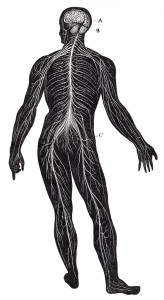
People tend to measure dishonesty by a person’s physical tells such as fidgeting, breathing rate, etc. Often times these tells coupled with the baseline of the individual and intuition leads us to be correct in our analysis when it is someone we know well. However, these techniques including measuring blood pressure and pulse as in a polygraph, are not admissible as hard evidence of deception in any legal form.
It is for a good reason that these signs of anxiety are not reliable indicators of a person’s honesty. They can be a representation of nervousness or just how a person normally behaves. Science has long tried to accurately map out lies from truths using technology and with the exponential growth of technology today, researchers can now delve into our brains.
Today researchers studying the brain and deception use a full body scanner that employs functional Magnetic Resonance Imaging (fMRI) technology to determine whether someone is fibbing by tracing blood flow to certain areas of the brain, which indicates changes in neuronal activity at the synapses (gaps between the neurons). “If you’re using fMRI, the scanner is detecting a change in the magnetic properties in the blood,“ says Sean Spence, a professor of general adult psychiatry at the University of Sheffield in England.
Scientific American notes in their article about this research that hemoglobin molecules in red blood cells exhibit different magnetic properties depending on the amount of oxygen they contain. The most active brain regions use—and thereby contain—the most oxygen.
Spence goes on to note, “When you know the answer to a question, the answer is automatic; but to avoid telling me the true answer requires something more.“ Polygraph, or lie detector, tests are the most well-known method of discerning fact from fiction, but researchers say they are not reliable because they measure anxiety based on a subject’s pulse or breathing rate, which can easily be misread. “They’re not detecting deception but rather the anxiety of being…[accused of deception],“ Spence says. “It’s known that psychopaths have a reduced level of anxiety,“ that would allow them to fool a polygraph. The fMRI, he says, images the actual processes involved in deception.
The researchers had a unique opportunity to study a woman convicted of poisoning a child in her care. This provided a stage for Spence and his colleagues to extend their, which until then had only been conducted on young, healthy university students as many studies of this sort do.
The team used an fMRI on Susan Hamilton of Edinburgh, Scotland, who was convicted of poisoning with salt a girl diagnosed with a terminal metabolic condition. Hamilton, who was in charge of feeding the child via a feeding tube that led directly into her stomach, was arrested after the girl was admitted to the hospital with massive blood sodium levels. The police testified that a syringe full of salt was found in Hamilton’s kitchen, but she denies any knowledge of it. The woman was released from prison last year and has continued to search for ways to publicly prove her professed innocence.
The researchers scanned Hamilton four times; during each scan they grilled her about the poisoning. With the fMRI, Spence was able to see that she activated extensive regions of her frontal brain lobes and also took significantly longer to respond when agreeing with the cops’ account. The results did not prove her innocent, Spence says, but suggested that her brain was responding as if she were innocent.
Spence and his team acknowledge that the results might have been more accurate if he had first done a baseline study that included asking her more general questions unrelated to the charges. Unfortunately, TV is show biz and his time with her was limited.
Here is a Youtube video which talks about a liar’s body language:
http://youtu.be/DAqqZ8bv4vU
Bettie, Thanks for your comment and the video link. However, diverting your gaze is not a reliable sign of deception as many researchers and studies have revealed.
Take a look at one of our past blogs “The Eye Contact Myth” (http://www.humintell.com/2009/09/the-eye-contact-myth/), it goes into further detail regarding misconceptions about detecting deception.
You can also check out our blog “Facial Cues that Do and Don’t Indicate Lying” (http://www.humintell.com/2013/06/facial-cues-that-do-and-dont-indicate-lying/)
Best